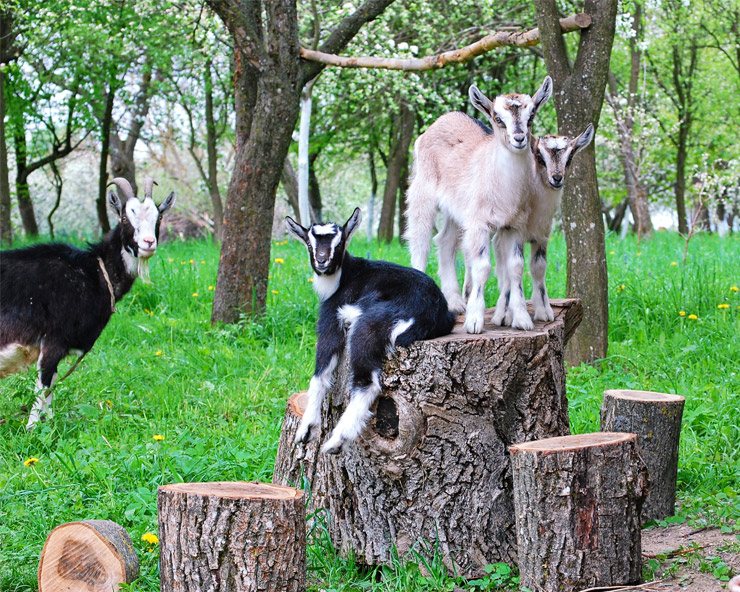When considering animal care on farms, many farmers focus on nutrition, health, facilities, and other areas necessary for animal production. An area for you to consider when caring for your animals is how enrichment plays a large role in their health and welfare. Environmental enrichment is a way to enhance the physical and mental stimulation an animal receives from their habitat. A stimulating environment helps animals produce natural behaviors such as foraging, social interaction, exploration, and playing.
Environmental enrichment on your farm can also help reduce unwanted behaviors like cribbing, tail biting, and pecking. Many of these animals are herd animals or like to be in a group with others. If you choose to house animals together, it can allow for some of these natural social interactions and playfulness, but there are benefits to providing extra enrichment.
Enrichment for Horses and Cattle
While many alternative and organic farms often provide more enrichment due to certification requirements, there are ways to continue providing enrichment to benefit your animals’ well-being. Good access to pasture and large pens encourages foraging and socializing for larger animals, such as horses and cattle. These natural behaviors have been shown to lessen behavioral issues. Supplements, such as salt, mineral, or molasses licks, are another way to provide enrichment and supplemental nutrients. Providing a variety of feeds or treats is another way to give enrichment that can encourage foraging behavior. One enrichment tactic used on many farms is providing toys or brushes. Brushes or scratching pads can promote natural grooming behaviors. Toys like balls or ropes can encourage playfulness and social interaction. When space and facilities allow, having your horses and cattle out on pasture provides some of the best enrichment.
Enrichment for Pigs
Providing a stimulating habitat for pigs, especially in enclosed spaces, is key to preventing pen aggression, improving animal performance, and reducing stress. Pigs are naturally curious and social animals. In natural surroundings, they spend up to 75% of their time burrowing, foraging, and exploring. Bedding, such as deep straw or shavings, can help stimulate natural behaviors such as burrowing and exploring. If you can, providing various foods like vegetables and forages encourages foraging behavior.
Enrichment for Sheep and Goats
Just like pigs, goats and sheep are naturally very curious and social. It is important to provide a variety of enrichment ideas to avoid stress and negative behaviors. Using a large pen or rotating pens often is important to help keep sheep and goats occupied, or they can become destructive. They are active animals, so providing an area to move will benefit their well-being. Large balls and climbing structures, even ones as simple as a bench, can be used. You can use plastic jugs to hold treats and provide entertainment for them.
Enrichment for Poultry
Like other animals, poultry can benefit from using enrichment on your farm. Positive stimulation can be very important for the welfare of poultry kept in small enclosures. Ideally, allowing poultry to forage and explore outside can provide the enrichment they would have when enclosed. Providing a variety of feeds such as mealworms, grubs, fruit, vegetables, and herbs is a great way to supply extra nutrients while keeping them occupied. In the summer, freezing fruits and vegetables is also a great way to keep poultry cool and occupied.
A few ideas of enrichment opportunities that can benefit any livestock are:
- puzzle feeders
- frozen treats
- toys, such as balls and ropes
- brushes or scratching pads
- mud or dust baths, specifically for chickens and pigs
- various bedding, straw, sand, shavings, and mulch
No matter the type of livestock you raise or your facilities, providing enrichment opportunities will benefit your livestock. It will help prevent those unwanted behaviors that can damage your property, hurt your other livestock, and potentially cause injury. If you are looking for more resources, check the list below for ways to provide enrichment to your livestock.
Resources:
Livestock: The use of environmental enrichment on farms benefits animal welfare and productivity
IAABC Journal: Environmental Enrichment for the Horse: The Need to Forage


I really like the way this article is layed out in how they all talk about all the different species of livestock .